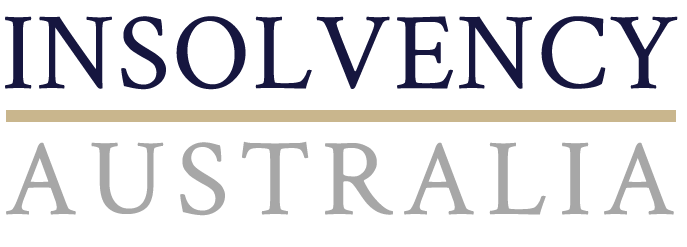Countdown to EOFY
With June 30 fast approaching, now’s the time to double-check you’ve implemented strategies that will help mitigate any risks and protect your business. While such planning is something that should be done throughout the year, there’s still time to introduce measures to give you a smooth transition into the new financial year. We asked several industry experts for their thoughts and tips on what you can do now to prepare for the upcoming EOFY – and beyond.
Joseph Sleiman, Sleiman & Co
The end of financial year is a good opportunity to review a company’s tax position, compliance, and to plan to bring tax lodgements up to date. Unfortunately, there are many directors who do not keep up with their obligations, especially when they approach the final stages of their company’s existence and competing pressures deter them from engaging an external tax accountant to complete their activity statements. But this is not advisable. The cost of completing activity statements is not overly prohibitive, and accountants will be able to advise if the assistance of a registered liquidator is required.
Staying engaged with your accountant may also reduce the likelihood of receiving a penalty notice, particularly a lockdown penalty notice, which could have dire consequences for the director’s personal financial affairs. A lockdown penalty notice is issued where the activity statements are more than three months behind and there is a significant debt. If issued, the director must pay the whole amount and they become personally liable, irrespective of any subsequent liquidation. Should the director keep the lodgments up to date within the three-month range, it is likely that an ordinary penalty notice or penalty warning letter may be issued – which can be avoided by payment of the debt – or if there are insufficient funds to satisfy the company’s tax debt, the director is at liberty to place the company into liquidation, and potentially avoid personal liability of the company’s tax debts.
Stewart Free, Jirsch Sutherland
Now is the time for business owners to identify if their individual efforts are generating sufficient returns. We’re facing a slowing economy, tightening credit market, inflationary pressures, supply chain issues, labour shortages, a more aggressive Australian Taxation Office, decreased demand, and discretionary spending changes. Any of these factors would give business owners pause, but together, it is imperative that they engage with their advisers and specialists to determine the next course of action.
Insolvency is generally regarded in a negative light, but that isn’t always the case. The law and processes governing financial distress are primarily designed to assist businesses to survive. Restructuring all or part of the business is usually sufficient to see the business continue to operate in some manner.
My father gave me a piece of advice when I was young that has stuck with me. He said that you may never get rich while on wages, but it is pretty hard to go broke. The reverse is also very true. My top tip for business owners is to always talk to someone – their accountant, lawyer or partner is a good start.
John Kukulovski, RRI Advisory
EOFY is a challenging time, even for those businesses that are doing well. It’s crucial that directors use this time to take stock of their company’s financial health and identify any opportunities and issues for the coming year. As insolvency professionals, we all too often see directors trying to take on new challenges without knowing how their company is holding up. You can’t chart a new course without a map.
To ensure a smooth transition into the next fiscal year and to prevent potential insolvency issues, we’ve compiled an EOFY checklist for company directors.
The key areas to consider include:
Financial Review and Analysis
- Assess revenue and expenses
- Review budget and forecast
- Seek professional advice
Restructuring and Cash-Flow Management
- Streamline operations
- Prioritise cash flow
- Engage professional assistance
Stakeholder communication and compliance
- Open and transparent communication
- Compliance with legal obligations
- Seek professional guidance
Ben Verney, Grey House Partners
In this final month, it’s important to understand your cash position and future cash-flow forecasts. Preparing and analysing business cash flows and forecasts is optimal if performed monthly. Daily/weekly is best and quarterly is reasonable.
From a SME perspective, directors should always be aware of their current and future cash position. If they are too busy working in their business, then they should engage a consultative committee or advisory board to bring in this level of financial oversight. This is a low-cost solution that provides immeasurable benefits.
As directors enter the new financial year, it’s important to assess weaknesses and flag areas where they may not be particularly talented or have time to manage them diligently. Then engage a business mentor with the necessary skills and time to fill these gaps.
Our top tips for this time of year are:
- Prepare and deal with your statutory and tax obligations
- Regularly review your cash position and assess your cash-flow forecasts
- Engage a business mentor and/or a consultative committee if you lack expertise in critical functions
- Seek independent advice from a registered insolvency practitioner to advise on restructuring options if you are unable to manage your cash flow
- Manage your time, focus on priorities, plan ahead, listen and act on good advice to drive your business forward in well-managed steps.
Frank Lo Pilato, RSM
There is still time to get things in line ahead of the year-end. If you have a non-paying customer and there is a genuine concern regarding recovery of the debt, then some or all of the debt can be deducted in the current tax year, provided it is written off before year-end and was included as income at an earlier time.
Keep in mind that you may be entitled to a reduction in GST for any bad debt you write off. If you are registered for GST and have included the forgiven amount in a prior period business activity statement, you are entitled to adjust down the GST payable in the period that you write off the debt. This may be used as a last-minute resource for unrecoverable debt, however pushing debtors to pay and having the money in your bank will always be a greater outcome.
One thing we are always seeing is concerns about cash flow. Setting up a clear cash-flow budget provides better oversight of a business and can pre-empt issues that may arise from cash deficits. This will help alleviate a lot of financial stress and ensure owners and directors allocate enough to cover their fixed costs.
It’s critical that business owners optimise cost pricing to cover their overheads, pricing accordingly to ensure their company is profitable while maintaining competitiveness and demand. In today’s tough economic environment, it’s important to boost sales by improving marketing, customer relationships and the quality of goods and services.
Our top tips for the last month of the financial year are:
- Follow up debtors and maintain cash flow and financial stability to minimise exposure
- Understand tax obligations and maximise tax benefits, including deductions, income tax offsets, asset depreciations and write-offs
- Keep records up to date to help monitor business health
- Assess expenditure and identify cost cuts to turn expenses and leakages into a profit
- Prepay expenses, such as rent, leases, bills and payables before the new year, which allows them to be deducted, thus providing refunds earlier, which can be made into working capital
- Use this time of year to possibly assess restructuring the business as a long-term preventative measure and to maximise profits.
Patrick Coghlan, CreditorWatch
Our Business Risk Index data showed a clear increase in external administrations across most industries, particularly in the latter half of FY23. Hospitality and construction were the two industries under the most pressure. Our forecast is for insolvencies to continue to rise in the first half of FY24. While the worst of inflation is behind us, energy prices are still set to rise, consumer confidence is at record lows and consumers will only continue to spend less as they grapple with high interest rates and rents.
Now is the time to collect on outstanding payments to help your business better manage EOFY tax and superannuation obligations. Online collections tools take the pain out of chasing unpaid invoices by sending automated reminders, increasing your collections rate and freeing up your accounts team to focus on value-adding tasks.
Insolvency primarily occurs due to problems with cash flow and, ultimately, a lack of it. Therefore, get your ledger in order now to start the new financial year in the strongest possible position. Data-driven analysis tools allow you to upload your ATB to assess the payment behaviour of your customer list and take measures to manage your exposure to risky businesses.
Get your policies and processes right and reinforce them with high-quality data. The number of variables impacting the risk exposure of modern businesses means that automation of credit risk management is really the only way to effectively keep on top of it. Whether it is onboarding/credit checks, ongoing monitoring or collections, automation of these processes helps you make more informed decisions and saves time and money.

